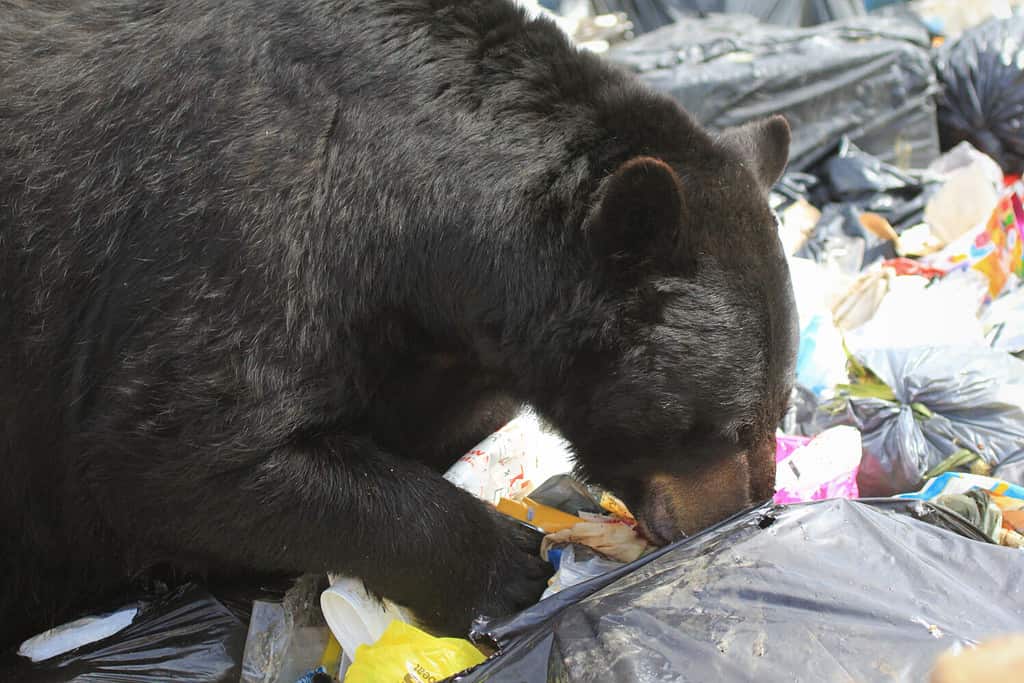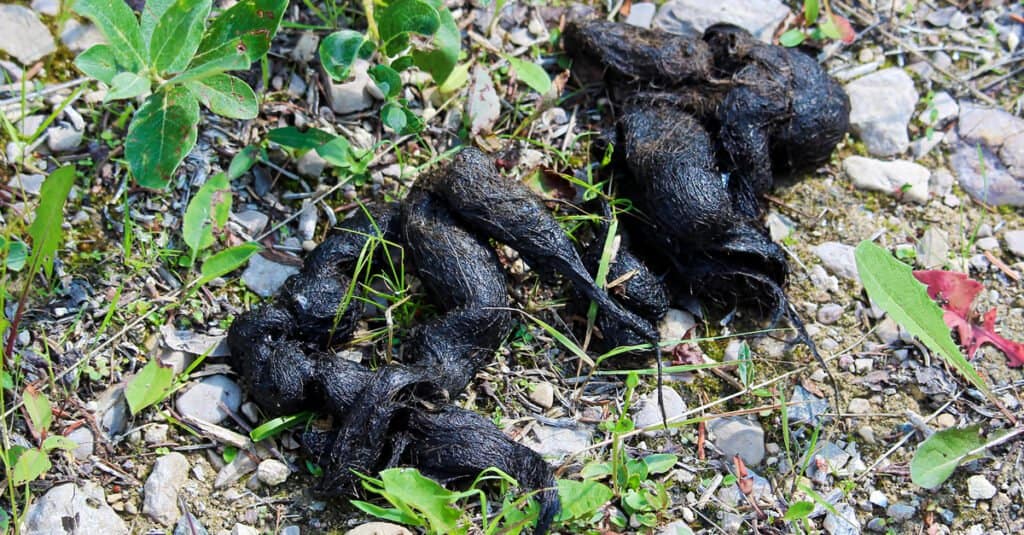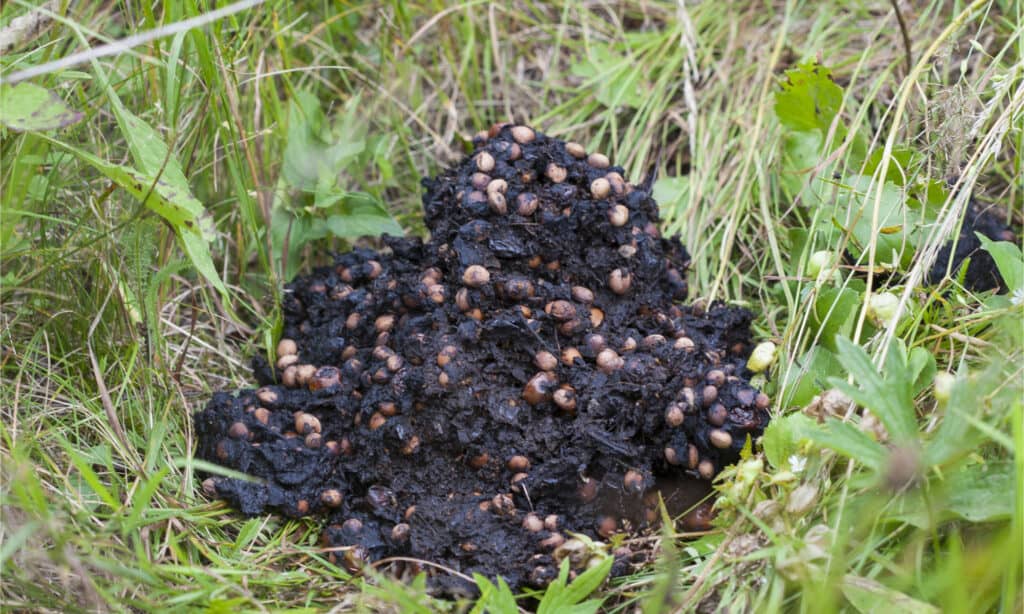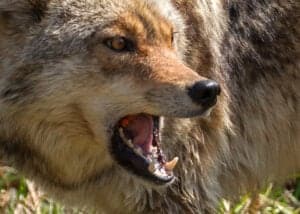You’ve spotted some unusual poop in your yard — now what? While some droppings are easy to identify and point to small mammals and rodents, when the poop is big, you may have to take protective measures. Both bears and coyotes have been known to wander into urban environments, but how do you know which has passed through? Learn how to tell the difference between coyote poop and bear poop!
How to Tell the Difference Between Coyote Poop and Bear Poop
Coyote Overview
At first glance, coyotes look like wolves. However, they are smaller — more medium-sized. They have long snouts, and their ears stand erect and large on either side of their heads. Their tails are bushy and droop. Their coloration is mostly grayish but there may be some tinges of red right behind their ears. Their faces might be black or more of a silver-gray color.
Typically, their tails have a black tip. These animals grow up to 42 pounds but on average, they weigh between 25 and 35 pounds. Coyotes prefer open environments like the desert. However, if it’s a human-populated environment, they typically gravitate toward wooded areas with lots of shrubbery. This provides them with places to hide since they prefer to avoid humans.

Coyotes have golden yellow eyes.
©Mircea Costina/Shutterstock.com
Bear Overview
Bears are large, stocky mammals characterized by their big skulls and powerful jaws. They have short tails and massive paws tipped off with long, sharp claws. Some bear species are fantastic at climbing. They eat a variety of foods including berries, fish, and animals as large as elk. Their sense of smell is finely tuned, which is what they need to find their food sources. A brown bear can weigh upwards of 900 pounds depending on the type. Black bears are typically smaller and can weigh up to 400 pounds.

Bears may venture into urban environments in search of food.
©Sketchart/Shutterstock.com
Coyote Poop
Picture a knotted rope. That’s what coyote poop looks like! The poop, also called scat, has a tube-like shape. Usually, coyote poop is somewhere between three and five inches long. Male scat is larger than the female coyote’s scat and can get as long as 12 inches in length. The diameter is typically 3/4 to 1.5 inches. A good distinguishing aspect of coyote scat is the way it curls at the end.
If you inspect it closely, you may be able to identify pieces of bone and hair that they would have digested from the animals they eat. Coyotes may eat rabbits and rodents but in urban environments, they may also eat cats and small dogs. Some non-meaty foods coyotes eat include fruits and nuts. Coyote scat may be brimming with diseases so it’s vital that you properly dispose of it, especially if you have pets at home.

Coyote poop may include hair from recent meaty meals.
©Amelia Martin/Shutterstock.com
If you spot coyote scat in your yard, it is cause for concern, particularly if you have small animals on your property. This could be a rabbit, a chicken coop, a cat, or a small dog. Knowing how to identify coyote scat can help you get rid of it right away and take measures to protect the animals on your property. Coyotes are known for their incredible jumping abilities, but you can combat their presence in a variety of ways, sometimes with the assistance of a motion-activated sprinkler system.
Bear Poop
When it comes to bear scat, its appearance can vary depending on what the bear eats during each season. For example, in the summer and fall seasons, a bear’s scat may have more of a loose composition (think loose cow pile) and contain traces of apples and berries. In the spring, bears eat a lot of grass and insects, which changes the appearance of their poop. It may be more greenish and have a cylindrical shape.
When the bear’s primary diet includes plants, their poop is going to have that cylindrical shape and it’s going to be quite fibrous. When a bear has been consuming a lot of meat, the scat doesn’t just produce a pungent, offensive odor, but it also adopts a darker color, nearly black. It may even remain moist after the bear has departed. It can measure up to 12 inches long and up to 2.5 inches wide.

Bear poop may sometimes appear as a loose pile or have a cylindrical shape, depending on the season and its diet.
©Viktor Loki/Shutterstock.com
If you live in an area where bears may roam through your yard, it’s vital you know when a bear has graced your property. Like with coyotes, you want to protect any animals on your property from a bear attack. You also want to ensure that the environment isn’t inviting for bears. Knowing what bear scat looks like could also keep you safe when you hike and camp in environments where bears live.
The photo featured at the top of this post is © yhelfman/Shutterstock.com
Thank you for reading! Have some feedback for us? Contact the AZ Animals editorial team.





